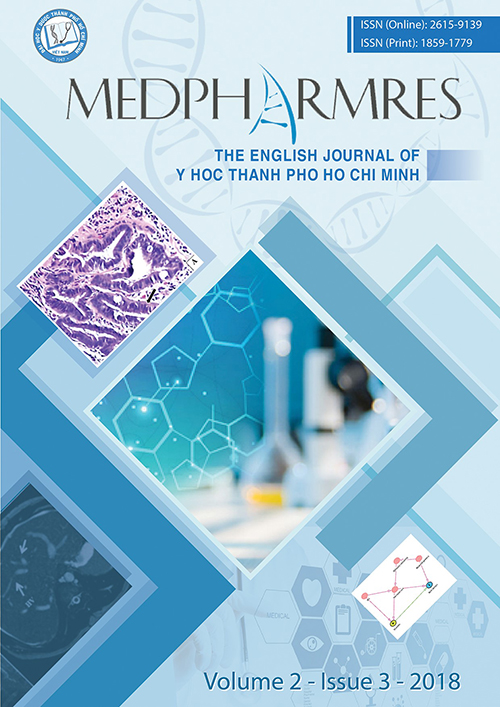Effect of fluid bolus triggers and their combination on fluid responsiveness in optimization phase of severe sepsis and septic shock resuscitation
Tóm tắt
Objectives: to evaluate the fluid responsiveness according to fluid bolus triggers and their combination in severe sepsis and septic shock.
Design: observational study.
Patients and Methods: patients with severe sepsis and septic shock who already received fluid after rescue phase of resuscitation. Fluid bolus (FB) was prescribed upon perceived hypovolemic manifestations: low central venous pressure (CVP), low blood pressure, tachycardia, low urine output (UOP), hyperlactatemia. FB was performed by Ringer lactate 500 ml/30 min and responsiveness was defined by increasing in stroke volume (SV) ≥15%.
Results: 84 patients were enrolled, among them 30 responded to FB (35.7%). Demographic and hemodynamic profile before fluid bolus were similar between responders and non-responders, except CVP was lower in responders (7.3 ± 3.4 mmHg vs 9.2 ± 3.6 mmHg) (p 0.018). Fluid response in low CVP, low blood pressure, tachycardia, low UOP, hyperlactatemia were 48.6%, 47.4%, 38.5%, 37.0%, 36.8% making the odd ratio (OR) of these triggers were 2.81 (1.09-7.27), 1.60 (0.54-4.78), 1.89 (0.58-6.18), 1.15 (0.41-3.27) and 1.27 (0.46-3.53) respectively. Although CVP < 8 mmHg had a higher response rate, the association was not consistent at lower cut-offs. The combination of these triggers appeared to raise fluid response but did not reach statistical significance: 26.7% (1 trigger), 31.0% (2 triggers), 35.7% (3 triggers), 55.6% (4 triggers), 100% (5 triggers).
Conclusions: fluid responsiveness was low in optimization phase of resuscitation. No fluid bolus trigger was superior to the others in term of providing a higher responsiveness, their combination did not improve fluid responsiveness as well.

